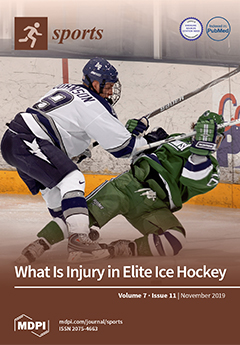Foot reflexology massage (FRM) has positive effects on cardiovascular and haemodynamic functions. However, information regarding the physiological changes after FRM post exercise-stress is limited. This study investigated the acute effects of FRM on heart rate variability (HRV) after the repeated sprint ability (RSA)
[...] Read more.
Foot reflexology massage (FRM) has positive effects on cardiovascular and haemodynamic functions. However, information regarding the physiological changes after FRM post exercise-stress is limited. This study investigated the acute effects of FRM on heart rate variability (HRV) after the repeated sprint ability (RSA) test and the Yo-Yo Intermittent Recovery Test Level 1 (YY). Twenty-six collegiate male football players were randomly assigned to the FRM group (n = 14) or to the control group (n = 12). Electrocardiographic (ECG) signals were recorded for 15 min in supine position before and after the intervention/control period in the RSA test and the YY test. In comparison to the control group, the FRM group demonstrated higher values of root mean squared successive difference in the RR interval (RMSSD;
p = 0.046, ES = 0.76) and in the proportion of differences of adjacent RR intervals >50 ms (pNN50;
p = 0.031, ES = 0.87); and higher percent changes in mean RR interval (%MeanRR;
p = 0.040, ES = 0.99), standard deviation of RR intervals (%SDNN;
p = 0.008, ES = 1.10), normalised high-frequency power (%nHFP;
p = 0.008, ES = 0.77), total power (%TP;
p = 0.009, ES = 0.84) and standard deviation 1 and 2 (%SD1;
p = 0.008, ES = 1.08, %SD2;
p = 0.020, ES = 1.04) after the RSA test. The magnitude effect of post-exercise HRV was small after the FRM RSA protocol (ES = 0.32–0.57). Conversely, the results demonstrated a moderate and large magnitude effect of HRV in the RSA and YY protocols of the control group (ES: RSA = 1.07–2.00; YY = 0.81–1.61) and in the YY protocol of the FRM group (ES = 0.99–1.59). The FRM intervention resulted in beneficial effects on the cardiac parasympathetic reactivity and the sympatho-vagal balance after RSA performance.
Full article






